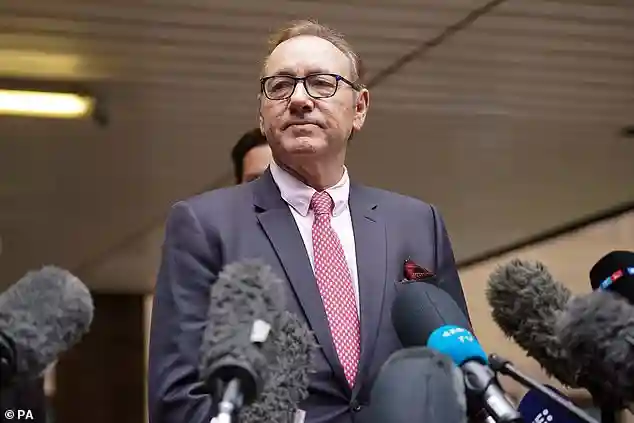Kevin Spacey has revealed a stark reality: he’s currently homeless and living out of hotels and Airbnbs.
Speaking to The Telegraph, the two-time Oscar-winning actor admitted his financial situation is “not great,” reflecting on years of legal battles and a Hollywood career that’s hit turbulent waters.
“Everything is in storage,” he said, “and I hope at some point, if things continue to improve, that I’ll be able to decide where I want to settle down again.”
Spacey described his life as being constantly on the move, “going where the work is,” after losing his home in Baltimore, where he had lived for over a decade.
From High-Profile Trials to Hollywood Blacklisting
Spacey’s struggles follow a series of sexual assault allegations that began in 2017.
Over 30 men accused him of misconduct, ultimately leading Netflix to remove him from House of Cards.
He consistently denied the claims.
In July 2023, he was found not guilty of assaulting four men in a high-profile trial at Southwark Crown Court, a case that captivated the UK #MeToo conversation.
The actor has been outspoken about being “cancelled” in Hollywood, blaming blacklisting for his difficulties in finding work since the trial.
“The costs over these last seven years have been astronomical,” he told the publication.
Returning to the Stage in Cyprus
In a bid to revive his career, Spacey recently performed in Limassol, Cyprus.
The one-night show, titled Songs & Stories, combined live jazz performances with tales from his decades-long career.
Tickets ranged from £220 to a £1,100 VIP package, which included a 30-minute meet-and-greet, champagne, and a fruit platter.
Organisers described the evening as more than a concert: “The return of an entertainer in the grandest sense of the word—for one night only in Limassol’s most prestigious venue.”
Spacey’s performance drew on his experience portraying Bobby Darin in Beyond the Sea and his past live shows with Billy Joel.
Cannes Lifetime Achievement Award Sparks Controversy
Earlier this year, Spacey returned briefly to the spotlight at a gala in Cannes, where he received a Lifetime Achievement Award from the Better World Fund.
The recognition aimed to celebrate his “decades of artistic brilliance” and “enduring impact on cinema and the arts,” though the event was not officially affiliated with the Cannes Film Festival.
The decision to honour him sparked debate, with critics calling it a “disgrace” to the #MeToo movement.
Festival organisers clarified that the actor’s attendance had no connection to official Cannes programming.
Looking Ahead
Despite public scrutiny and professional setbacks, Spacey seems determined to reclaim a sense of normalcy and purpose.
He continues performing, telling stories, and exploring musical ventures—seeking a new chapter after years of personal and professional upheaval.
“I feel I’m back to where I first started,” he told The Telegraph, “just going where the work was.”
For Spacey, it’s a return to the basics of his craft—performing, entertaining, and hoping for stability after turbulent years.
Share on Facebook «||» Share on Twitter «||» Share on Reddit «||» Share on LinkedIn